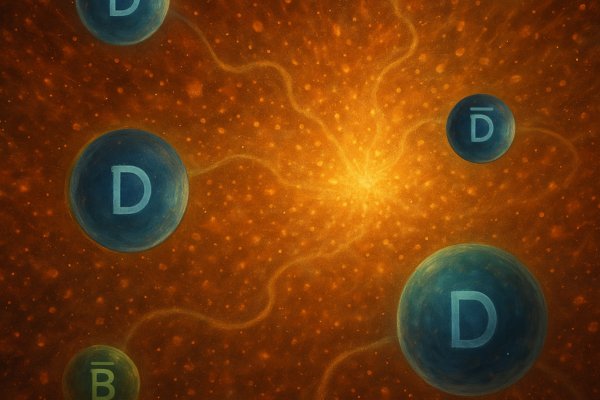A new international report has taken a major step toward understanding how some of the heaviest particles in the Universe behave in extreme conditions, similar to those just after the Big Bang. The team published their results in Physics Reports.
Physicists from the Indian Institute of Technology Goa, the Institute of Cosmos Sciences of the University of Barcelona (ICCUB), and Texas A&M University have published a comprehensive review exploring how particles containing heavy quarks (known as charm and bottom hadrons) interact in a hot, dense environment called hadronic matter. This environment is created in the last stage of high-energy collisions of atomic nuclei, such as those at the Large Hadron Collider (LHC) and the Relativistic Heavy Ion Collider (RHIC).
Recreating the Early Universe
When two atomic nuclei collide at near-light speeds, they generate temperatures over 100,000 times hotter than the center of the Sun. These collisions briefly produce a state of matter called the quark-gluon plasma (QGP), a soup of fundamental particles that existed microseconds after the Big Bang. As this plasma cools, it transitions into hadronic matter, a phase made up of particles like protons, neutrons, as well as other baryons and mesons.
The study focuses on what happens to heavy-flavor hadrons (particles containing charm or bottom quarks, such as D and B mesons) during this transition and in the hadronic phase expansion that follows.
Heavy Particles as Probes
Heavy quarks are like tiny sensors. Because they are so massive, they are produced right after the initial nuclear collision and move more slowly and interact differently with the surrounding matter. By studying how they scatter and diffuse, we can learn about the properties of the medium they travel through.
The researchers reviewed a wide range of theoretical models and experimental data to understand how heavy hadrons, like D and B mesons, interact with light particles in the hadronic phase. They also examined how these interactions affect observable quantities like particle flow and momentum loss.
Key Findings
“To really understand what we see in experiments, it’s crucial to look at how heavy particles move and interact also during the later stages of these nuclear collisions,” said Dr. Juan M. Torres-Rincon. “This phase, when the system has cooled down, still plays a sizable role in shaping how particles lose energy and flow together. We also need to address the microscopic and transport properties of these heavy systems right at the transition point to the quark-gluon plasma. That’s the only way we can reach the level of precision that today’s experiments and simulations demand.”
To better understand these findings, one can use a simple analogy: imagine dropping a heavy ball into a crowded swimming pool. Even after the biggest waves settle, the ball keeps drifting and bumping into people. In a similar way, the heavy particles created in nuclear collisions continue to interact with other particles around them, even after the hottest and most chaotic phase has passed. These ongoing interactions subtly change how the particles move, and studying these changes helps scientists better understand the conditions of the early universe. Ignoring this phase would mean missing an important part of the story.
The study highlights the importance of including hadronic interactions in simulations to accurately interpret data from RHIC and LHC experiments.
Looking Ahead
Understanding how heavy particles behave in hot matter is crucial for mapping the properties of the early universe and the fundamental forces that govern it. The findings also pave the way for future experiments at lower energies, such as those planned at the CERN SPS and the upcoming FAIR facility in Darmstadt (Germany).
This work brings us closer to a complete picture of how matter behaves under extreme conditions and to answering some of the biggest questions about the origin of our Universe.



